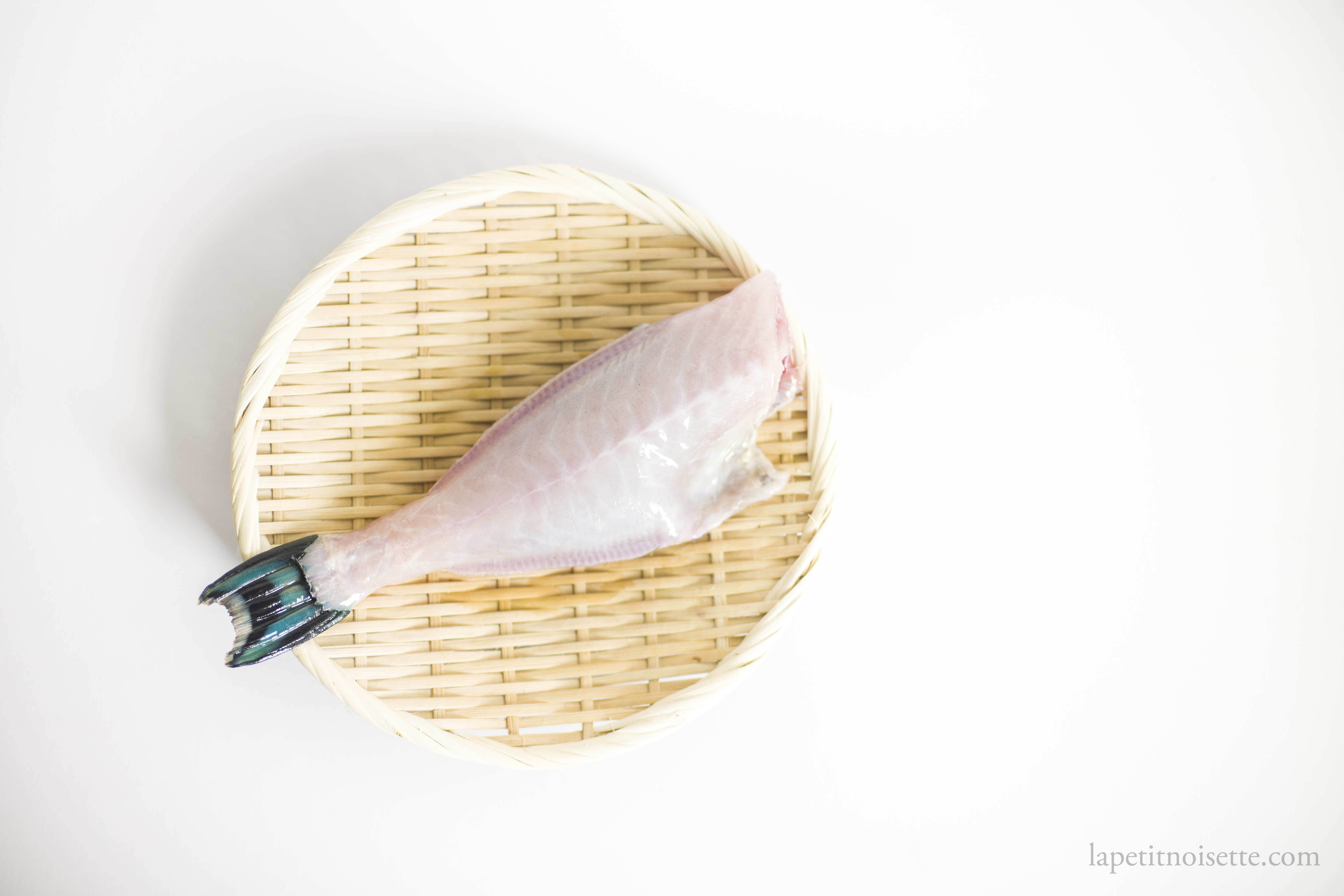*This fish is very versatile. When filleting this fish, save the bones to steep in sake to make kotsusake (骨酒) and the liver to make curry.
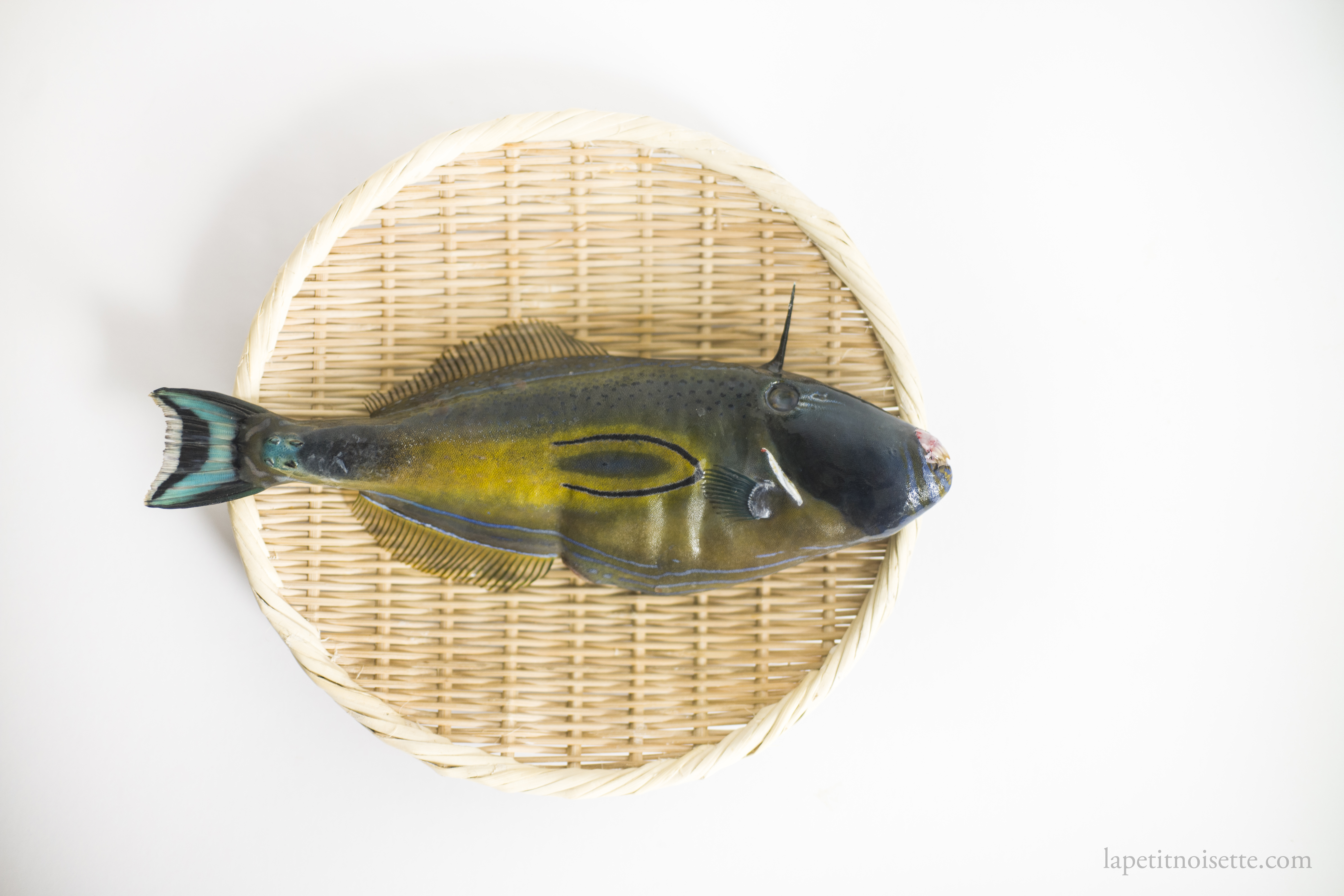
Kawahagi or the thread-sail filefish (Stephanolepis cirrhifer), is a specific species of fish from the Monacanthidae family. Members of the Monacanthidae family are usually known as filefish generically or leatherjackets down in Australia and New Zealand where at least half of all known filefish species are found. In Japan, the term Kawahagi (カワハギ) usually refers to Stephanolepis cirrhifer or true kawahagi (本カワハギ) as different species of filefish can be found throughout Japan, particularly as you travel south towards Okinawa.
Whilst the example fish shown here is not a true kawahagi but a different species of filefish, the preparation and filleting technique used is similar across all filefish.
One unique aspect of filefish in general is that they’re closely related to pufferfish but are not poisonous. Similar to pufferfish, they have extremely rough and thick skin which can be quite hard to cut. Because of that, the skin of filefish is usually just pulled off but be warned that this is quite harsh on your fingers if you’re not wearing gloves.
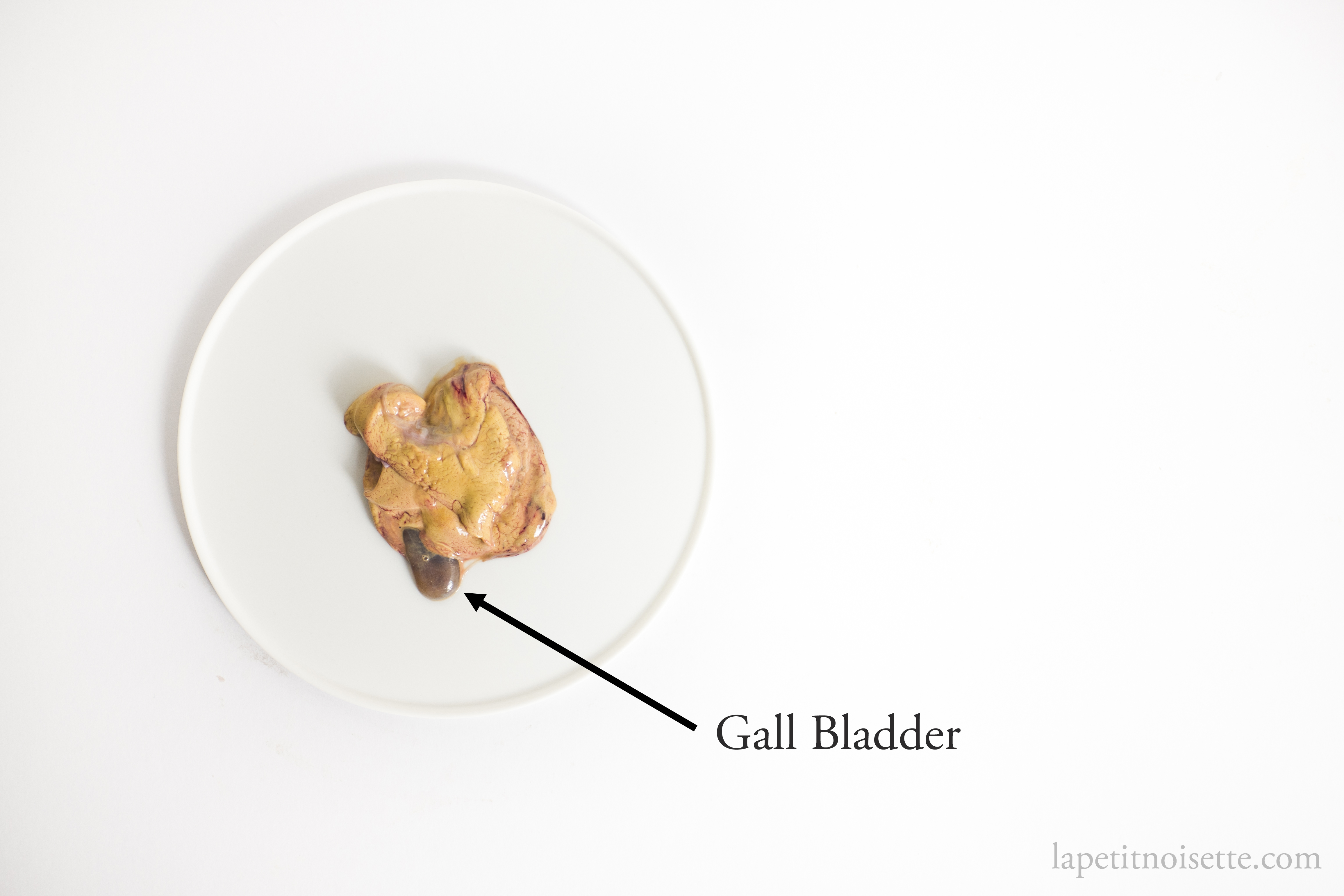
The flesh of Kawahagi is nice and firm, making it ideal for cooking in hotpots and stew and can be similar to that of flatfish. However, the main star of the fish is it’s fat and rich liver which is usually ground up and served as a nigiri topping, or mixed with soy sauce as a dipping sauce. They also have a large gallbladder attached to the liver that you need to carefully remove to prevent it’s pungent smell and bitter taste from contaminating the liver.
One defining characteristic of filefish is the spine that crowns their head which explains the family name Monacanthidae, from the Greek word monos meaning “one” and akantha meaning “thorn”. It’s this spine that guides up on how to fillet different filefish. Unlike other fish, we don’t want to start with an incision into the belly which may damage the previous liver. Instead, place the fish flat down on the board and use your knife to cut an incision into the back of the fish’s head behind the spine as shown in the picture.
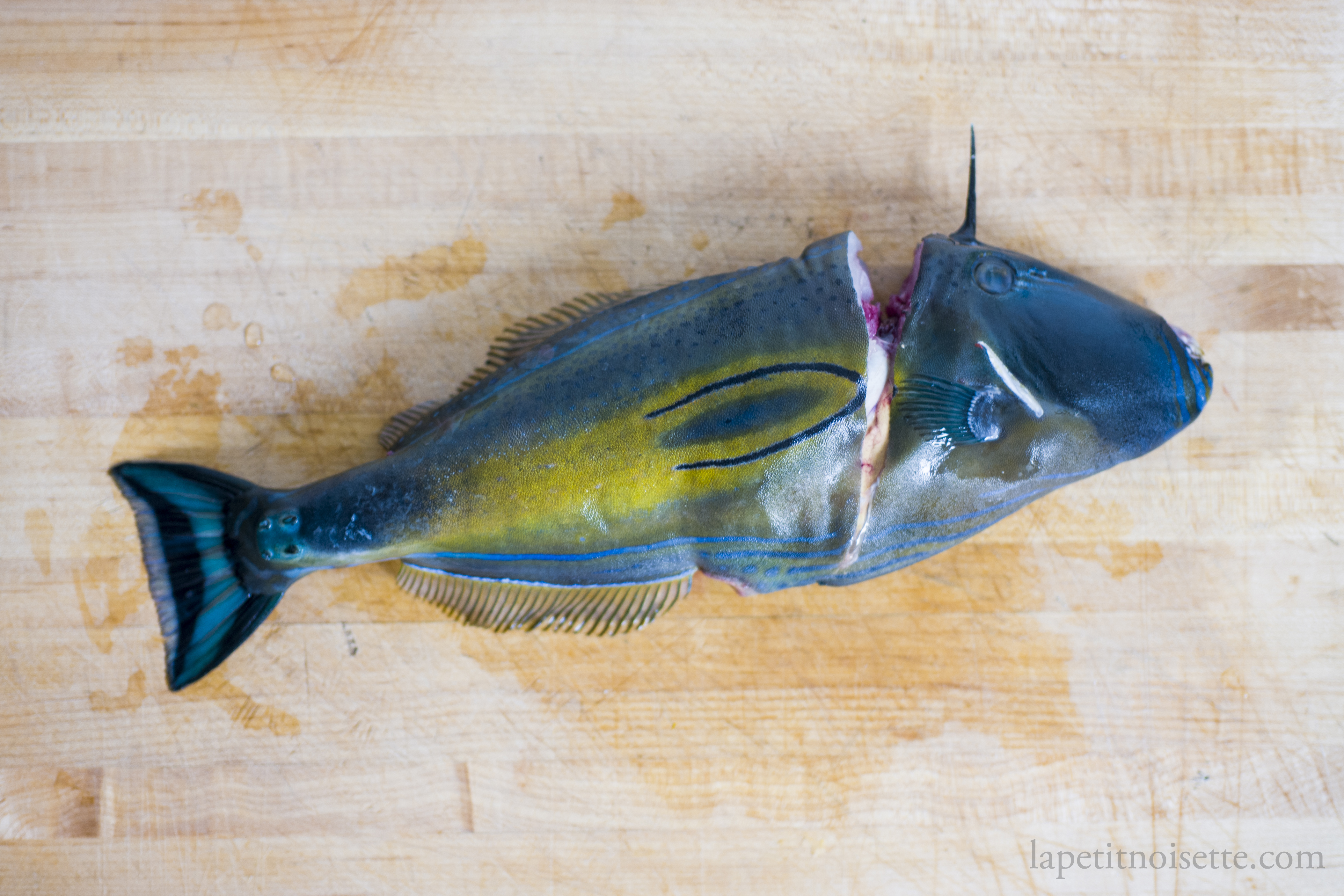
After making the incision, you can then gently pull the head downwards to tear off the head from the body without damaging any of the organs. It’s that simple. However, your particular filefish’s skin is very thick, you can use a scissors to slowly cut the skin from the incision all the way down to the stomach like I did in the picture.
Once you pull the head off, gently use your fingers to pull out the liver before cutting off the gallbladder which should be attached to the liver.
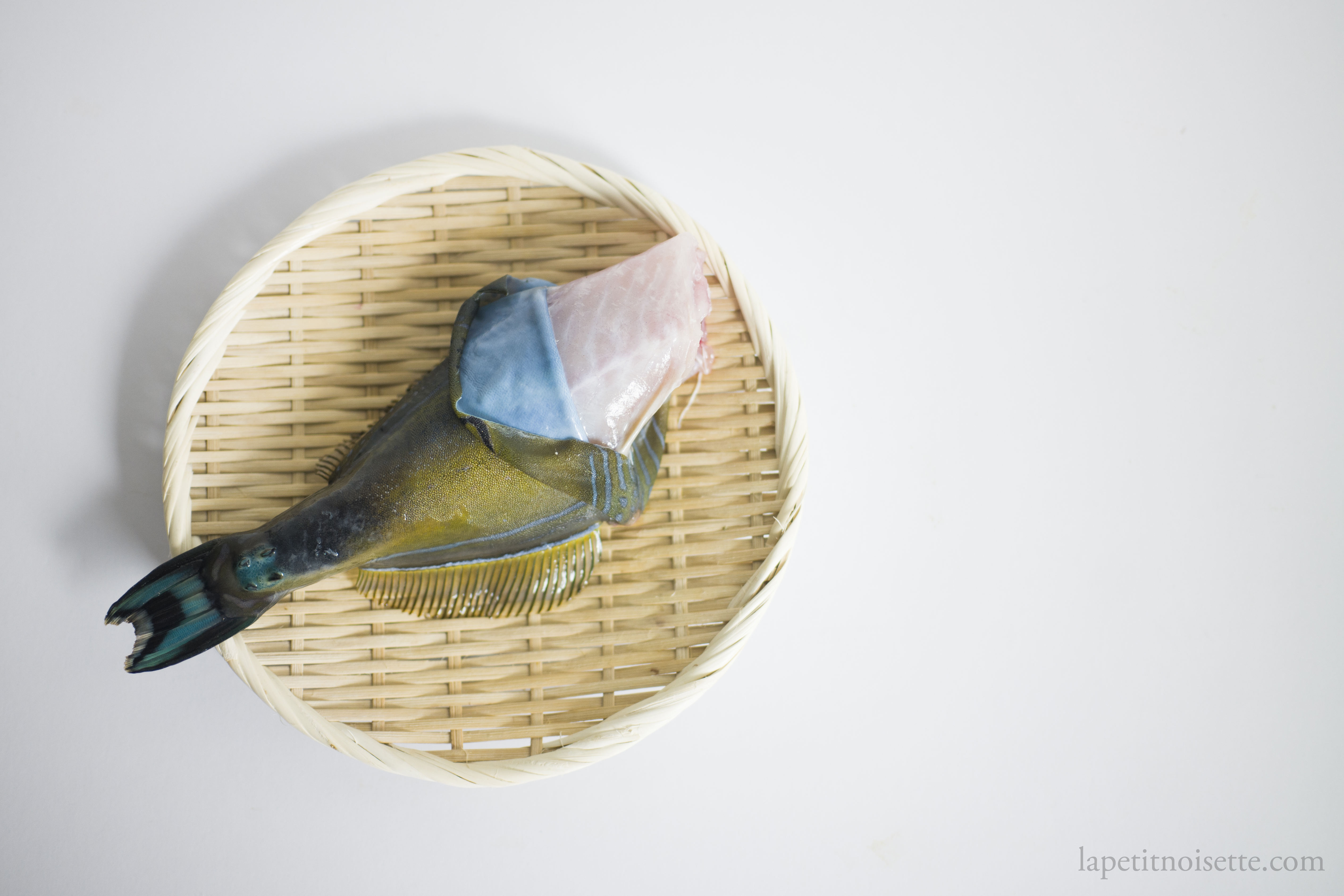
To remove the skin, simply pull the skin off the fish downwards towards its tail like unwrapping a bar of chocolate. Be warned, this can sometimes be quite hard to do but the skin should be so tough that it comes off in one piece so don’t be afraid of tugging at the skin. If you’re not wearing gloves, the tough skin might damage the surface skin of your fingers. For some filefish, you can pull the skin from each side of the fish separately, whilst for some (like the one pictured here), the entire skin comes off in one piece.
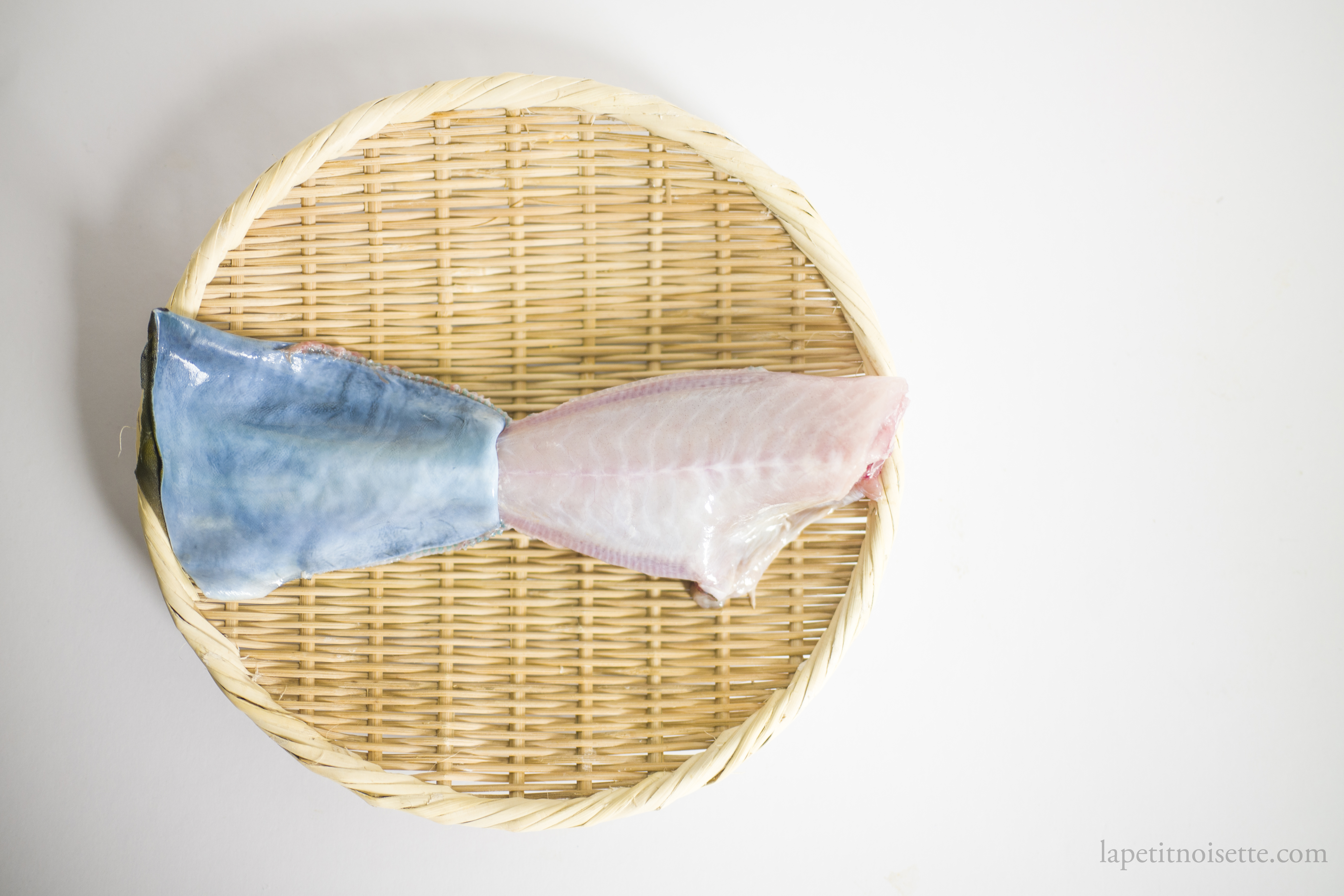
You can then continue to fillet the fish as normal from this point. After cutting open the internal cavity of the fish, insert the tip of the knife and break the rib bones, separating them from the backbone. Next, cut the flesh starting from the end of the belly cavity all the way down to the tail, angling the blade towards the bone.
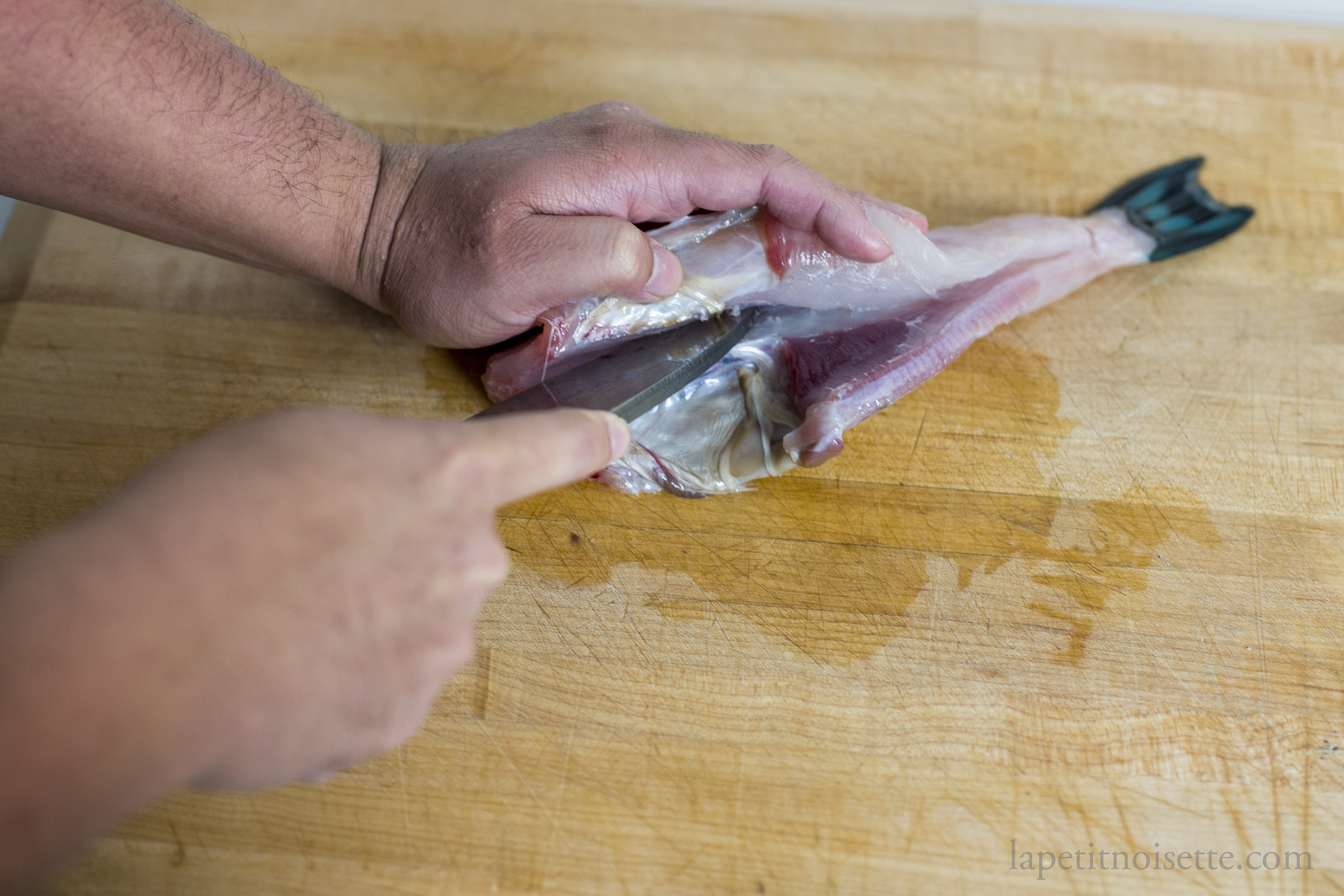
Turn the fish around and place the knife above the dorsal fin. Use your other hand to support the fish. In long cutting motions, separate the flesh from the spine of the fish, angling your blade downwards so that you can feel your blade running along the spine, minimising waste. if the long cutting motions prevents the flesh from being damaged too much from multiple cuts. Cut as close to the spine as possible to prevent flesh from being left on the bone. Continue the cutting motion until the entire fillet is separated from the fish.
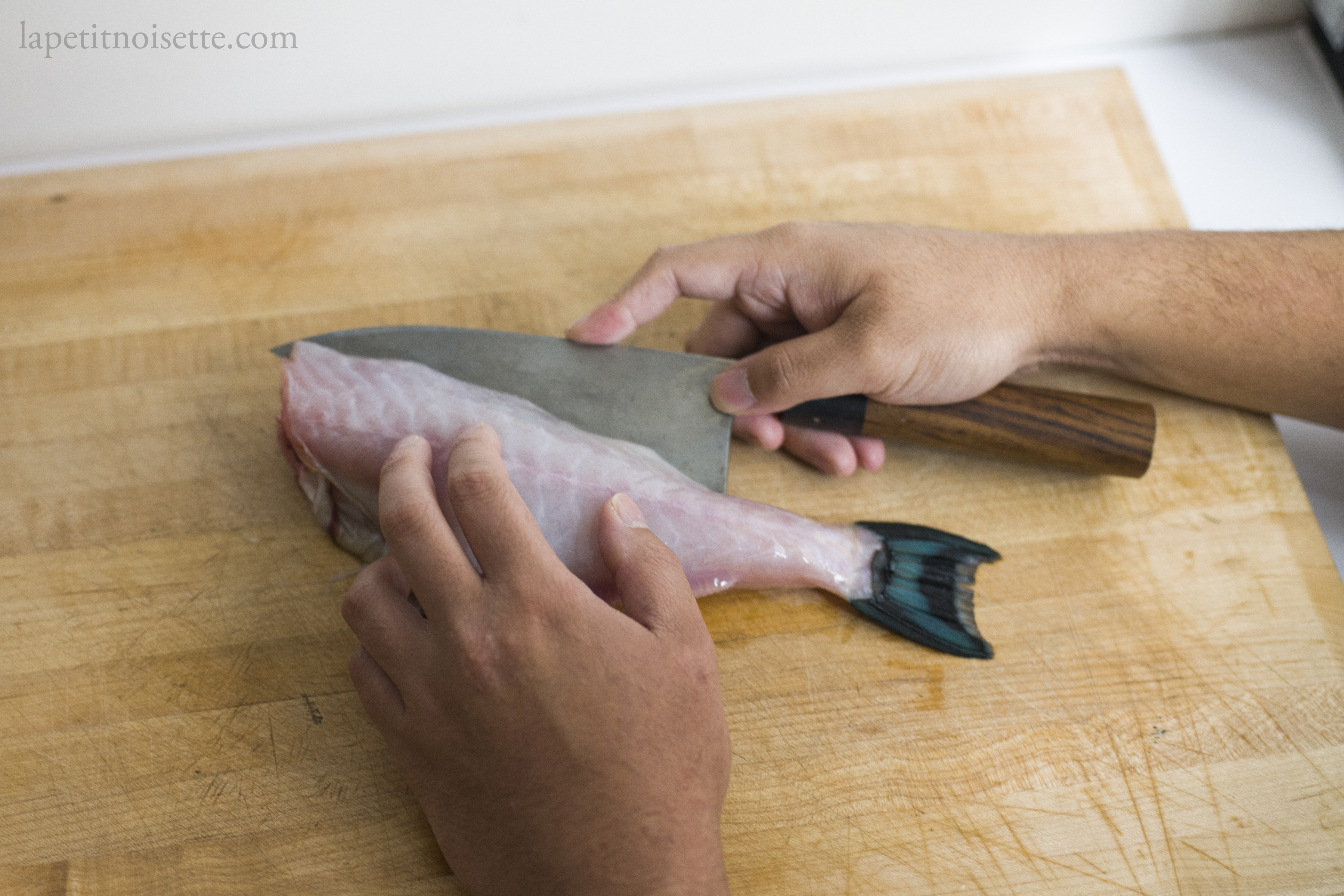
Flip the fillet over and lay it flat on the chopping board. Flip your knife so that it is facing upwards and gently separate the rib bones from the flesh just where it meets the pin bones.
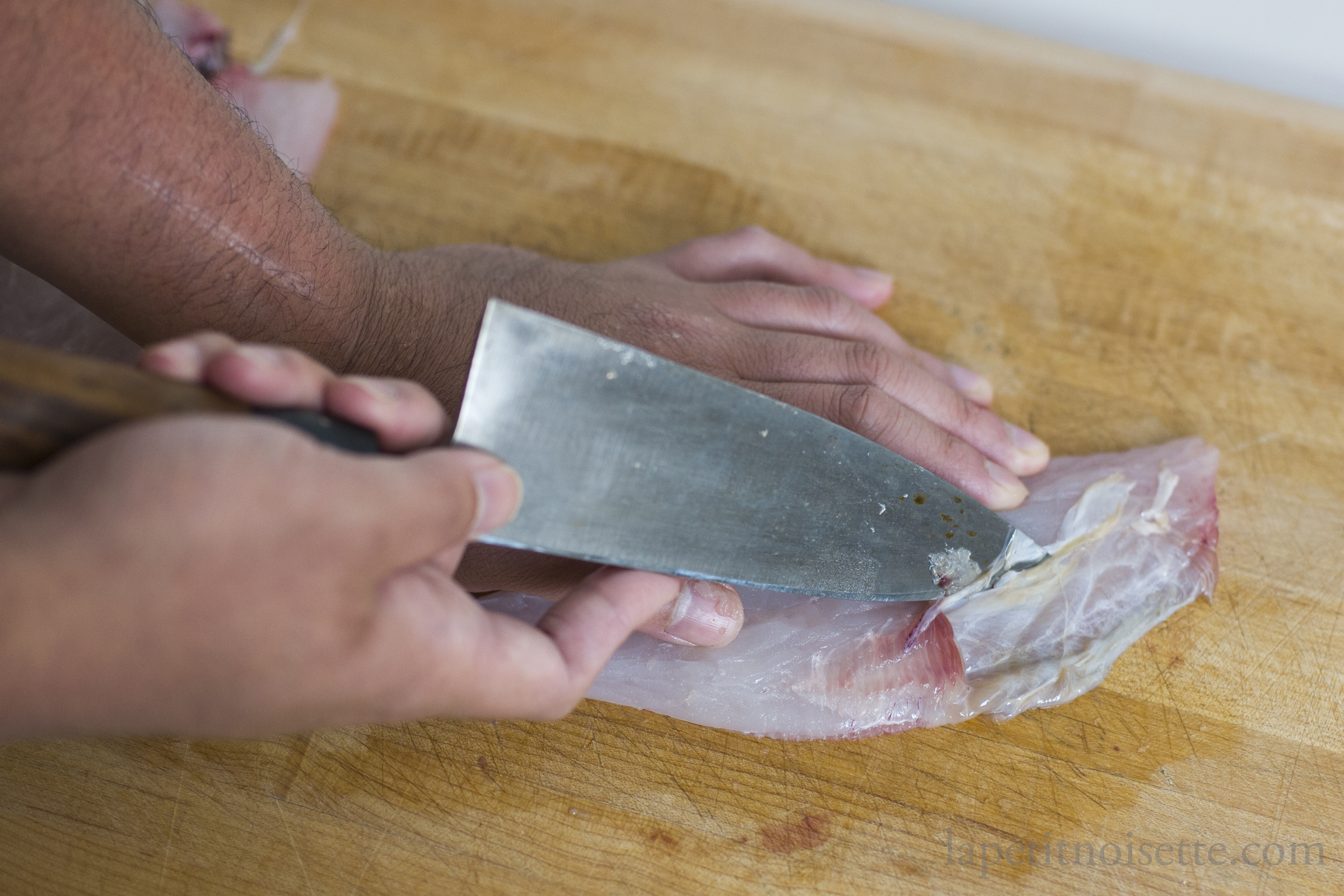
Turn your knife back and place the knife under the rib cage, cutting as to gently separate the rib cage from the flesh, angling the knife upwards towards the ribcage to reduce waste. Don’t worry about cutting yourself as the rib cage should be protecting your fingers.
To remove the pin bones, pull the pin bones using a pair of tweezers in the direction towards the head. Pulling the pin bones towards the tail is easier but will damage the flesh. Dip the tweezers in water to clean them occasionally. Repeat until you can not feel any more pin bones. Remember to use a firm grip as not to break the pin bones, leaving bone fragments inside the fish. It is better to pull the pin bones slowly and steadily, rather than quickly.
To finish preparing the Kawahagi, repeat for the other side of the fish to extract another fillet.
